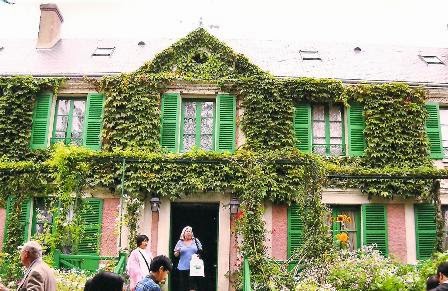St Andrews and its Historic Sites
Loyalists established the historic fishing
village of St. Andrews in 1783. The small seaside village has a present
population of about 3000. When the King’s surveyor laid out the town he plotted
60 even square blocks. King Street runs from the wharf up the center of town to
the top of the hill. It’s the steepest hill to walk, although not strenuous. By
following the waterfront south 4-5 blocks before turning east the hill almost
disappears and you can walk tree-lined streets of well kept old homes with
manicured yards. Many of the homes in
town came by barge from Castine, Maine years ago when loyalists fled to Canada.
The
court house and jail date to 1840 and the Greenoch Presbyterian Church to 1824.
At the St. Andrews Block House Historic Site, north of the town center, we
learned the block house by the bay was a fortification of the war of 1812. Made
of square logs, instead of round ones, eliminated air spaces and allowed lesser
penetration in case of attack---which never occurred. The blockhouse was close
to an island just off shore in the mouth of the St. Croix River and is where in
1605 seventy Frenchmen made the first settlement.
A strange shaped block of wood we learned were
muzzle plugs. Kept in the muzzle mounts when the mounts were not in use, they kept
out the cold in the winter.
We
drove to the point where at low tide one can drive across flat stone to
Minister’s Island, settled in 1790 by an Anglican minister from Connecticut.
The 500-acre island originally had 22 buildings of which eleven remain. The
island was self-sustaining. In 1890 a Mr. Van Horne, founder of the Canadian
railroad, bought Minister’s Island. In
1977 the island with its three-story barn, the largest in Canada, and the
50-room summer cottage became the property of the provincial government. No
humans live on the island but 60-70 deer do.
Our first stop walking
the darling little city was the Andrew Sheriff House on King Street where we
had a delightful visit and a good time talking to the friendly docent.
The
house, built in 1820, is one of the over 100 historic buildings in St. Andrews.
Right away I spotted and pointed out to my buddy the Christian door.
The kitchen, located in the basement, had a
brick floor laid over a thick layer of sand to promote quick drainage in case
of flooding. The accordion lathe work ceiling positively fascinated me. It had
been left unplastered, and was so much prettier than a plastered ceiling.
However, it probably was not as insulating. A large table in the kitchen also
made into a chair when the top was tilted back---a large chair, one for
cuddling children.
As we returned upstairs the docent said, “Only
three families have lived in this house. In 1986 the Bond family bought the
house, restored it, and gave it to the province. The home now is a working
museum teaching children the art of cooking in a fireplace, making soap and
candles (the old fashion way, not with wax) as well as other Colonial
endeavors. If one did not make his own candles, it could cost him a third of
his pay to buy them, as candles were very expensive items in Colonial days.”
It took
two men six months to cut enough wood to feed the home’s nine fireplaces in
winter.
We had
a lot of fun talking to the docent who was a world of information and spent a
fair amount of time in this wonderful old house.
All Saints Church,
The church was built in
1867. Pictures and narrative in the foyer revealed that Diana and Prince
Charles visited the church in 1983.
This church replaced one built by
Loyalists in 1788. Samuel Andrews, from Connecticut and of Minister’s Island,
was the first pastor. He was seven years old when he arrived in St. Andrews. The
sheriff had extensive responsibilities as he covered all of Charlotte County,
not just the town. If he was unfortunate enough to lose a prisoner, he was fined.
The Anglican Church’s ceiling is built
from pews of the old church and resembles a ship’s hull turned upside
down. The lovely stain glass windows
were made in England. The pulpit is from the original church. The Royal Coat of
Arms of William and Mary is above the arched doorway. It was brought from the
Connecticut church by the first pastor and is believed to be one of only six
that survived the American Revolution.
The docent here was very friendly and
knowledgeable. She too was fun to converse with.
Ross House
Museum
The
docent here told us, “An American lawyer by the name of Harris originally built
this house in 1822-24, then he and his family of 11 children moved into the
home. In later years Harris left the town money to build a library and add a
wing to the hospital. After Harris the home was vacant for several years.
In 1938
Mr. and Mrs. Ross, a childless couple, bought the house, when in their 60s,
simply to display art and furniture collected as they traveled around the
world. Mr.Ross, an Episcopal minister from Taunton,
Mass., was born in the late 1860s. In the early 1900s he visited a friend in
St. Andrews who took him on a buggy ride. Ross fell in love with the area and
bought a home at the bottom of the hill he named Rossmont. The couple returned
to Rossmont every summer until 1945. Mrs. Ross’s father was president of Dunn
& Bradstreet, and upon his death left his daughter a wealthy woman.
We
wandered through the museum marveling at the lovely furnishings and art.
It had been a delightful day. We saw lots and
had great fun talking to all the friendly docents. When
all was said and done we returned to our lovely hotel.


